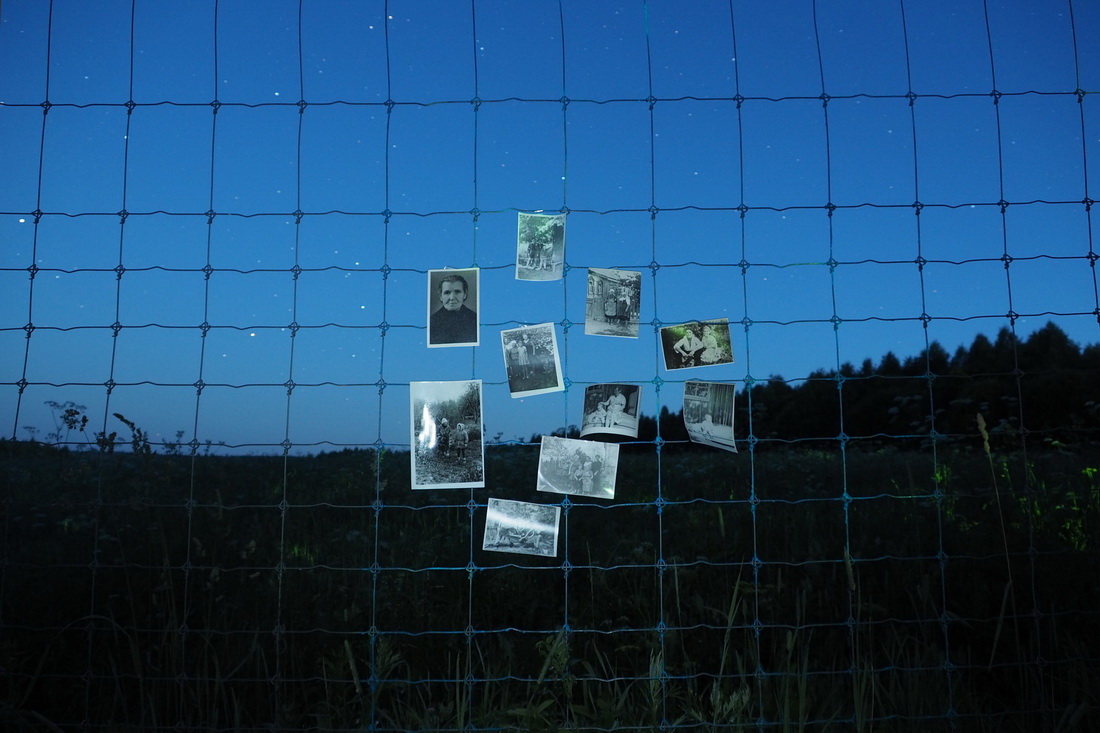Experimental - NOMINEE: Evgeny Molodtsov
Evgeny Molodtsov
Linden
Support this photographer - share this work on Facebook.
The artist literally returns to his ancestral home and explores the processes of severing intergenerational ties and disrupting the continuity of a particular territory. Appeal to the sources is decisive in an attempt to formulate for oneself what is really important for self-identification. This need is especially acute in the era of globalization and ubiquitous spread of "cloud" technologies, when communication with the place is lost, and anyone can try on the role of a nomad.
"I return to the village of Verigino to my grandmother's family home, where I spent my whole childhood. 15 years ago the house was forced to sell. When I came to the village, I saw the overgrown territory of the estate: it turned out that the owner had died, and the house had been in a state of some neglect for several years. But it did not scare me so much, but what happened to the whole village. It was fenced with a wire fence 4 meters high on 3 sides. On the other side of the fence there was a hunting farm, which had rented out the whole area around the village and had bought a part of the village itself. It also started using the territory of the reserved forest.
As it was possible to find out, today the territory is used for rest by a brick factory owner and his high-ranking friends. Behind the fence there are cottages, two helipads and even a hangar with tanks and howitzers. Despite all the measures taken, the village continues to fall into the zone of shelling during hunting. In this connection, the hunting economy tries in every possible way to force the last remaining residents to sell their plots and leave. For example, the road leading to the village was blocked by a fence; residents are limited in movement, are not allowed into the forest and on the pond. The most persistent continue to write numerous complaints, but they remain unanswered. The attempt to "fight against Leviathan" is futile, and people leave their native lands. "
"My position in this project is also a manifestation of weakness. The main object of my enmity is the wire fence. It seems endless: it crosses forests, fields, ponds and streams. Fighting it like a battle with windmills. In an attempt to bypass the entire fence and get into the forest, I walk around the perimeter and return to the starting point. Then I decide to break this isolation, cut the fence wire and make the trees out of it, returning the lost forest to myself. "
"A family manor house with a huge apple orchard is something that no longer belongs to our family, but the importance of this place for me and for several generations cannot be overemphasized. To whom does it belong, remaining in desolation? Can I now, when the manor is for 2 years old as abandoned, go to the house, walk in the garden? Where is the boundary between moral right and law? It is important for me to show my invisible involvement in this place. Painted with a phosphor paint, one of the window frame does not differ from the others in the light of day, but begins to appear (glow) in total darkness."
"The symbol of communication between relatives and different generations is a tree. For our family - it's a huge linden tree, which has been standing opposite the family house for more than a hundred years. It is interesting that the linden as a material has always been used to make cheap ornaments and icon salaries. Unlike solid wood, the soft linden can easily be carved. For the same reason, fake seals were also made of it. Therefore, fakes are called lindens. For me, in the lime, there is a duality - on the one hand, unlike expensive hard rocks, it becomes the symbol of connection with my roots. On the other hand, the "lime tree" is associated with the situation around the native village: it is difficult to believe in it and it seems that this is not true. In the project "lime tree" takes the form of fake trees from the wire fence."
The artist sees in the history of his native land a reflection of the processes taking place in our country and contemporary society as a whole. State policy and the lack of support and protection of the rights of local communities often accelerate the disappearance of the link between generations, between a person and the territory. And even the one who tries to resist this, encounters various "invisible" forces that prevent the preservation of ties.
About author:
I was born in Penza, spent all my childhood in the Tula region, studied in Moscow, in Italy and now I live in St. Petersburg. I can confidently classify myself as an ethnic Russian, but I can't call myself a Tulyak, a Penzenets, a Muscovite or a Petersburger. So I can't identify my affiliation with the local / regional identity group. Perhaps the reason is that my family lost contact with their native territory, its roots. For example, my grandfather and father were the militaries, which were distributed in the direction of military service. In Russian and Soviet history, there are many other reasons why people lose their connection and the binding to the native place, are forced to leave their city or village. There are numerous turning points in Russian history - the Civil and the Great Patriotic War, the repression, the big Soviet constructions, Rearrangement and etc. The facts of my biography influenced a lot on the formation of my art practice and the theme of my projects. Studying the identity through the deconstruction, appropriation and performative practices, I try to reach the self-identification and understand what it means to be a Russian or someone else.

